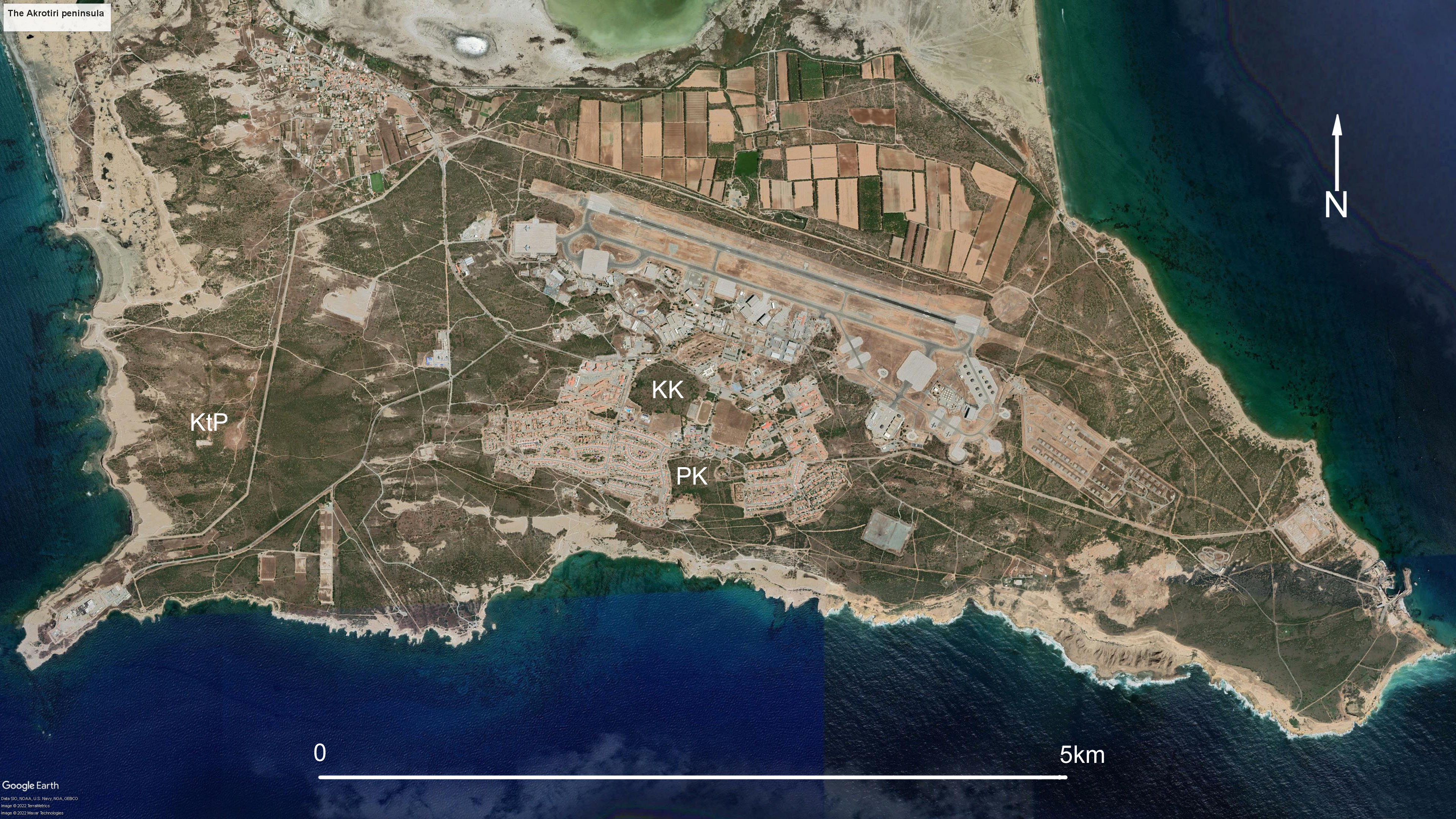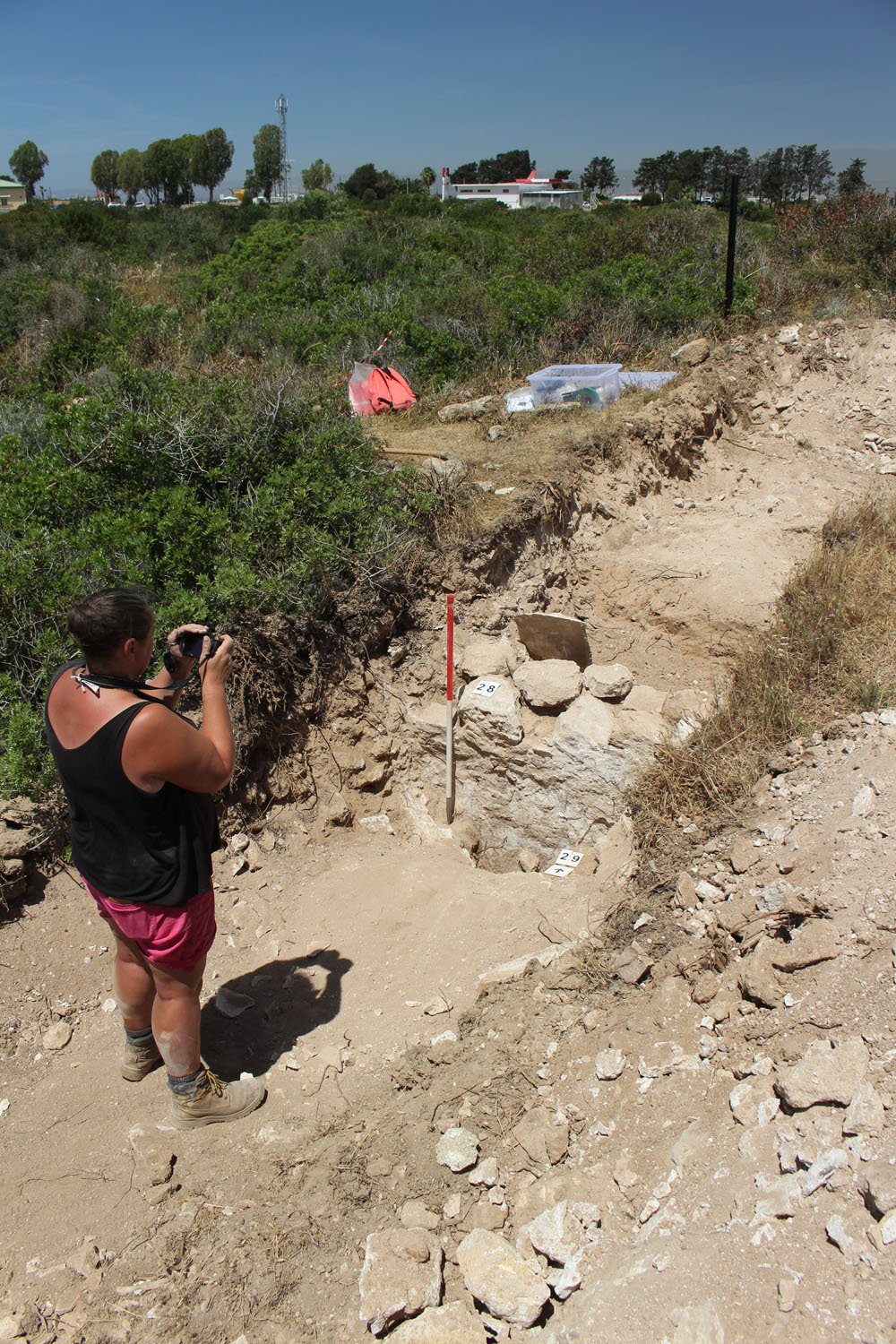Press Releases
24-02-2023 14:16
Press release by the Department of Antiquities regarding the “Ancient Akrotiri Project”
The Department of Antiquities, Ministry of Transport, Communications and Works announces the completion of the 2022 Ancient Akrotiri Project (AAP), led by the University of Leicester under the direction of Prof. Simon James.
Between 18 and 29 April 2022,archaeologists from the University of Leicester, UK, excavatedinvestigative trenches into the ancient settlement sites of Kato Katalymata and Pano Katalymata in the centre of the Akrotiri peninsula (Fig. 1). Both sites appear from surface indications to be Late Antique, abandoned no later than the seventh century AD.
The northern site, Kato Katalymata, appears to cover approximately 6 ha, and Pano Katalymata approximately 3 ha. Each site seemed to comprise a settlement mound standing 1-4 m high, with indications of shallower stratigraphy extending across adjacent flat ground. As both sites appeared to be Late Antique, their proximity (only 400mapart)requires explanation. Both apparent settlement mounds contained quarries, representing later exploitation for ready-made building materials. The excavations sought to exploit this by cutting machine trenches down the sides of the quarries to expose the stratigraphic sequence of the ‘tells’.
At Kato Katalymata, machining rapidly showed that the current sloping surface concealed a near-vertical quarry face through the ancient deposits, so revealing the full stratigraphic sequence in a trench shallow enough for safe manual excavation was not possible. Only the final occupation phase f was accessible, although this was very informative, revealing a substantial plastered wall of mortared rubble standing over 1m tall, amidst worked stone, roof tile, gypsum slabs and a marble fragment. This represents substantial buildings of some pretension, apparently abandoned intact, slowly collapsing, and later dug over for usable materials (Fig.2). The modest quantity of pottery recovered appears consistent with a 5th-7th century date for the excavated phase.
The southerly, uphill site of Pano Katalymata proved to offer a striking contrast. The machine trench revealed that the ‘settlement mound’ was instead a massive dump of upcast from ancient stone quarrying. Extension of the trench across the top of the mound revealed a single phase of archaeological features cut into the surface of the upcast (Fig. 3). These comprised shallow trenches and pits, containing modest quantities of late antique pottery, again provisionally around the 5th- 7th centuries AD. The trenches appear to mark the positions of structures far more ephemeral than that revealed at Kato Katalymata, but similar to shallow, irregular constructions detected by geophysics in the eastern part of this site. It seems the site was quite large, but very short-lived.
The 2022 trenches have largely resolved the puzzle of why there were apparently two Late Antique village sites in such close proximity near the centre of the Akrotiri peninsula. In fact, there was only one substantially-built and long-enduring settlement: Kato Katalymata. Pano Katalymata, comprised an extensive but ramshackle and briefly-occupied site, partly overlying earlier quarrying debris. It is possible that this second, ephemeral settlement was connected with the short-lived ecclesiastical complex at Katalymata ton Plakoton, excavated by Dr Eleni Procopiou.
The Ancient Akrotiri Project team wishes to thank the Department of Antiquities, the UK Sovereign Base Areas Administration, and RAF Akrotiri for making the fieldwork possible.
PHOTOGRAPH CAPTIONS
Fig. 1 Google Earth imagery of Akrotiri, showing the locations of Kato Katalymata (KK), Pano Katalymata (PK), and Katalymata ton Plakoton (KtP).
Fig. 2 Trench at Kato Katalymata, showing the substantial masonry wall, with displaced flooring slab against it, at the top of the slope of the quarry into the ‘tell’ (descending behind photographer).
Fig. 3 Trench at Pano Katalymata, showing the pattern of foundation trenches and pits cut into the top of a huge dump of material from earlier stone-quarrying activities.
(ΜΧ/ΕΧΡ)
Relevant Press Releases

19-04-2024 16:42
PIO e-mail Αlerts service is suspended


20-03-2024 11:43
Acceptance of postal items to Israel has resumed





